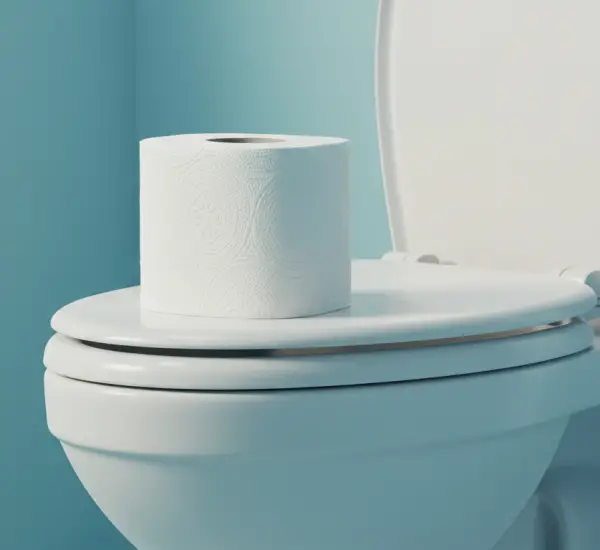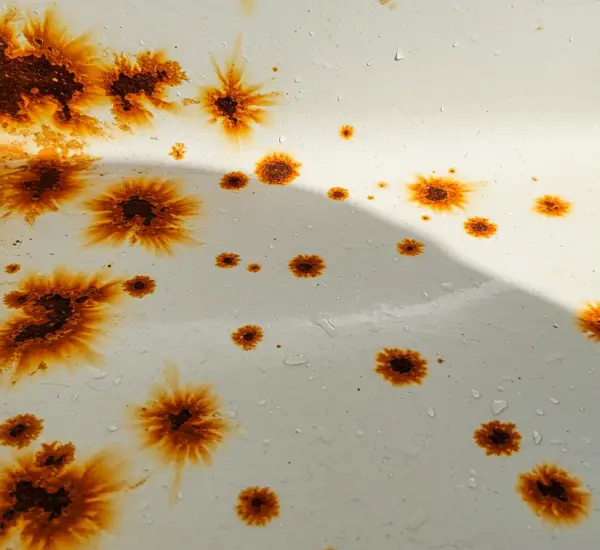In recent years, there’s been a growing return to the so-called “grandma’s remedies,” those simple, natural, and time-tested solutions that our grandmothers relied on long before the age of modern cleaning products. With limited resources and no ready-made detergents or specialized sprays, they found clever and effective ways to tackle everyday household problems. One of these traditional tricks comes in handy for a common and frustrating issue—how to remove water stains from wooden furniture.
Why Water Stains Appear on Wood
Anyone who owns a wooden table knows how careful one must be when placing glasses, mugs, or bottles on it. Just a little condensation from a cold drink is enough to leave behind the dreaded white ring—a faint, cloudy mark that disrupts the natural beauty of the wood grain. These marks are caused by moisture seeping into the protective finish, trapping water between the varnish and the wood surface.
The problem is especially common with older furniture, which may not have a modern, moisture-resistant coating. In the past, this was precisely why coasters were considered indispensable in every home. Of course, one could protect the table with a plastic or vinyl tablecloth, but that often takes away the charm and elegance of natural wood.
And spills aren’t limited to water. A knocked-over glass of wine or juice can cause even more serious staining. While water tends to leave a light halo, darker liquids can deeply penetrate the surface, requiring professional refinishing. But when it comes to water rings, your grandmother’s quick-thinking remedy might save the day.
The Key: Act Fast
The secret behind this old-fashioned trick is speed. The quicker you act, the higher your chances of removing the stain completely. When water is spilled, it should be wiped up immediately with a soft, absorbent cloth or paper towel. This prevents the liquid from seeping into the wood or finish.
However, in many cases, you might not notice the stain right away. The typical culprit is a cold glass left on the table, forming a ring that only appears later—when it’s already dry and dull. Fortunately, there’s still a way to reverse the damage, and it doesn’t involve harsh chemicals or sanding.
The Simple Tool That Works Wonders
The tool you need for this “grandma-approved” method is probably already in your home: a hairdryer. Yes, this everyday appliance can help lift moisture trapped under the wood’s finish.
Here’s how to do it:
-
Plug in your hairdryer and set it to a low or medium heat—never the highest setting. Excessive heat can damage the finish or darken the wood.
-
Hold the dryer a few inches away from the stain. Avoid pointing the nozzle directly at one spot.
-
Move the dryer in slow, circular motions around and over the affected area. The goal is to gently warm the wood, allowing the trapped moisture to evaporate without overheating the surface.
-
Continue this process for several minutes, checking the stain’s appearance as you go. You should start to notice it fading gradually.
This process requires patience and care. Keep the dryer moving constantly to prevent concentrated heat from causing dark scorch marks. Depending on the size and depth of the stain, it may take up to 30 minutes for the water ring to disappear completely.
Why the Hairdryer Trick Works
The principle behind this remedy is simple: water stains are caused by moisture trapped beneath the surface finish, and heat helps release that moisture. By slowly warming the area, the water vaporizes and escapes, restoring the wood’s natural appearance.
However, if the stain has been there for a long time or the wood is untreated, results may vary. In such cases, the mark may not disappear entirely but can become significantly lighter. It’s always best to test the method on a less visible area first if you’re unsure about the wood’s finish.
When to Call a Professional
If the hairdryer method doesn’t completely remove the stain, or if your furniture is antique or valuable, it’s better not to experiment further. Instead, consult a professional furniture restorer or carpenter. A specialist can lightly sand and refinish the area using products that match the original color and texture, bringing your table back to life without risking further damage.
There are also commercial wood-cleaning and stain-removal products available on the market, often containing gentle abrasives or oils designed to restore luster. However, before applying anything new, always read the label carefully and test the product on a small hidden area to ensure compatibility with your wood’s finish.
Preventing Future Water Stains
As with most home issues, prevention is easier than repair. Here are a few practical tips to keep your wooden furniture safe from moisture damage:
-
Use coasters and placemats every time you serve drinks or hot dishes.
-
Avoid placing damp items directly on wood surfaces, including vases or potted plants that can leak condensation.
-
Apply a protective wax or polish periodically to strengthen the finish and repel water.
-
Wipe spills immediately, even if it’s just a few drops. The faster you act, the less likely a stain will form.
-
Maintain humidity control in your home—excessive indoor humidity can contribute to moisture buildup in wooden furniture.
Embracing the Wisdom of the Past
It’s fascinating how many of our grandmothers’ cleaning secrets still work today. Before the era of specialized cleaning products and chemical solutions, they relied on observation, experience, and natural methods. The hairdryer trick for removing water stains is a perfect example of this timeless knowledge—simple, effective, and eco-friendly.
So the next time you spot a ring on your wooden table, resist the urge to panic or reach for harsh cleaners. Instead, take a page from grandma’s book: plug in your hairdryer, move it gently in circles, and watch the stain disappear.
With a bit of patience and care, you can restore the natural beauty of your wooden furniture—proving once again that old-fashioned wisdom never truly goes out of style.



